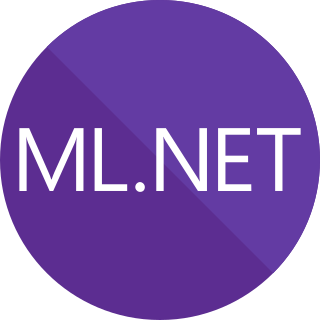
OpenCV is a library of programming functions mainly for real-time computer vision. Originally developed by Intel, it was later supported by Willow Garage, then Itseez. The library is cross-platform and licensed as free and open-source software under Apache License 2. Starting in 2011, OpenCV features GPU acceleration for real-time operations.

Compute Unified Device Architecture (CUDA) is a proprietary parallel computing platform and application programming interface (API) that allows software to use certain types of graphics processing units (GPUs) for accelerated general-purpose processing, an approach called general-purpose computing on GPUs (GPGPU). CUDA API and its runtime: The CUDA API is an extension of the C programming language that adds the ability to specify thread-level parallelism in C and also to specify GPU device specific operations (like moving data between the CPU and the GPU). CUDA is a software layer that gives direct access to the GPU's virtual instruction set and parallel computational elements for the execution of compute kernels. In addition to drivers and runtime kernels, the CUDA platform includes compilers, libraries and developer tools to help programmers accelerate their applications.
Intel Fortran Compiler, as part of Intel OneAPI HPC toolkit, is a group of Fortran compilers from Intel for Windows, macOS, and Linux.
Intel Advisor is a design assistance and analysis tool for SIMD vectorization, threading, memory use, and GPU offload optimization. The tool supports C, C++, Data Parallel C++ (DPC++), Fortran and Python languages. It is available on Windows and Linux operating systems in form of Standalone GUI tool, Microsoft Visual Studio plug-in or command line interface. It supports OpenMP. Intel Advisor user interface is also available on macOS.
Eclipse Deeplearning4j is a programming library written in Java for the Java virtual machine (JVM). It is a framework with wide support for deep learning algorithms. Deeplearning4j includes implementations of the restricted Boltzmann machine, deep belief net, deep autoencoder, stacked denoising autoencoder and recursive neural tensor network, word2vec, doc2vec, and GloVe. These algorithms all include distributed parallel versions that integrate with Apache Hadoop and Spark.

TensorFlow is a free and open-source software library for machine learning and artificial intelligence. It can be used across a range of tasks but has a particular focus on training and inference of deep neural networks.
The following table compares notable software frameworks, libraries and computer programs for deep learning.
An AI accelerator, deep learning processor, or neural processing unit (NPU) is a class of specialized hardware accelerator or computer system designed to accelerate artificial intelligence and machine learning applications, including artificial neural networks and machine vision. Typical applications include algorithms for robotics, Internet of Things, and other data-intensive or sensor-driven tasks. They are often manycore designs and generally focus on low-precision arithmetic, novel dataflow architectures or in-memory computing capability. As of 2024, a typical AI integrated circuit chip contains tens of billions of MOSFETs.

Keras is an open-source library that provides a Python interface for artificial neural networks. Keras was first independent software, then integrated into TensorFlow library, and later supporting more. "Keras 3 is a full rewrite of Keras [can be used] as a low-level cross-framework language to develop custom components such as layers, models, or metrics that can be used in native workflows in JAX, TensorFlow, or PyTorch — with one codebase." Keras 3 will be the default Keras version for TensorFlow 2.16 onwards, but Kerals 2 can still be used.

spaCy is an open-source software library for advanced natural language processing, written in the programming languages Python and Cython. The library is published under the MIT license and its main developers are Matthew Honnibal and Ines Montani, the founders of the software company Explosion.
PyTorch is a machine learning library based on the Torch library, used for applications such as computer vision and natural language processing, originally developed by Meta AI and now part of the Linux Foundation umbrella. It is recognized as one of the two most popular machine learning libraries alongside TensorFlow, offering free and open-source software released under the modified BSD license. Although the Python interface is more polished and the primary focus of development, PyTorch also has a C++ interface.
The Open Neural Network Exchange (ONNX) [] is an open-source artificial intelligence ecosystem of technology companies and research organizations that establish open standards for representing machine learning algorithms and software tools to promote innovation and collaboration in the AI sector. ONNX is available on GitHub.

ROCm is an Advanced Micro Devices (AMD) software stack for graphics processing unit (GPU) programming. ROCm spans several domains: general-purpose computing on graphics processing units (GPGPU), high performance computing (HPC), heterogeneous computing. It offers several programming models: HIP, OpenMP/Message Passing Interface (MPI), and OpenCL.

ML.NET is a free software machine learning library for the C# and F# programming languages. It also supports Python models when used together with NimbusML. The preview release of ML.NET included transforms for feature engineering like n-gram creation, and learners to handle binary classification, multi-class classification, and regression tasks. Additional ML tasks like anomaly detection and recommendation systems have since been added, and other approaches like deep learning will be included in future versions.
The bfloat16 floating-point format is a computer number format occupying 16 bits in computer memory; it represents a wide dynamic range of numeric values by using a floating radix point. This format is a shortened (16-bit) version of the 32-bit IEEE 754 single-precision floating-point format (binary32) with the intent of accelerating machine learning and near-sensor computing. It preserves the approximate dynamic range of 32-bit floating-point numbers by retaining 8 exponent bits, but supports only an 8-bit precision rather than the 24-bit significand of the binary32 format. More so than single-precision 32-bit floating-point numbers, bfloat16 numbers are unsuitable for integer calculations, but this is not their intended use. Bfloat16 is used to reduce the storage requirements and increase the calculation speed of machine learning algorithms.

Neural Network Exchange Format (NNEF) is an artificial neural network data exchange format developed by the Khronos Group. It is intended to reduce machine learning deployment fragmentation by enabling a rich mix of neural network training tools and inference engines to be used by applications across a diverse range of devices and platforms.
Amazon SageMaker is a cloud based machine-learning platform that allows the creation, training, and deployment by developers of machine-learning (ML) models on the cloud. It can be used to deploy ML models on embedded systems and edge-devices. The platform was launched in November 2017.

oneAPI is an open standard, adopted by Intel, for a unified application programming interface (API) intended to be used across different computing accelerator (coprocessor) architectures, including GPUs, AI accelerators and field-programmable gate arrays. It is intended to eliminate the need for developers to maintain separate code bases, multiple programming languages, tools, and workflows for each architecture.
Medical open network for AI (MONAI) is an open-source, community-supported framework for Deep learning (DL) in healthcare imaging. MONAI provides a collection of domain-optimized implementations of various DL algorithms and utilities specifically designed for medical imaging tasks. MONAI is used in research and industry, aiding the development of various medical imaging applications, including image segmentation, image classification, image registration, and image generation.
Accelerated Linear Algebra (XLA) is an advanced optimization framework within TensorFlow, a popular machine learning library developed by Google. XLA is designed to improve the performance of TensorFlow models by optimizing the computation graph at a lower level, making it particularly useful for large-scale computations and high-performance machine learning models. Key features of TensorFlow XLA include:








